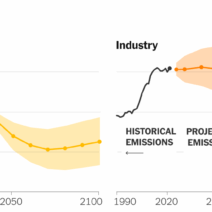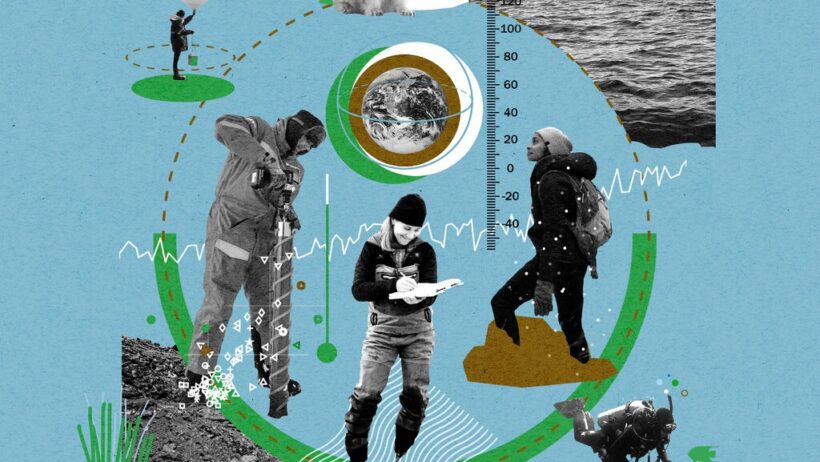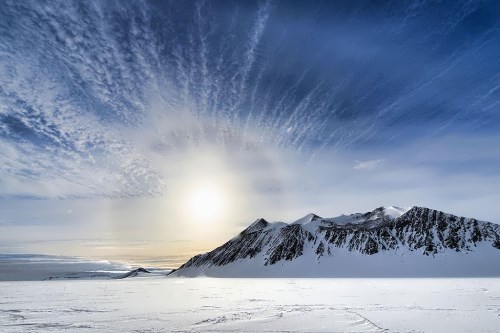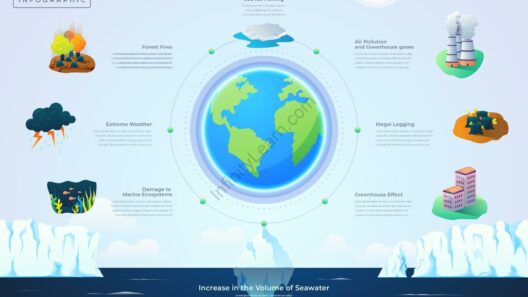As the world advances into the 21st century, a palpable transformation is evident across the globe. Human activity, particularly since the dawn of industrialization, has irreversibly altered the delicate equilibrium of our planet’s climate systems. The ramifications are extensive and multifaceted, giving rise to what can aptly be termed “The World’s New Normal.” This phenomenon encapsulates not only the immediate evidence of climate change—rising temperatures, erratic weather patterns, and unpredictable climate events—but also serves as a reflection of more profound, systemic changes in environmental dynamics.
Global warming, driven primarily by the rampant emissions of greenhouse gases, is the most pressing issue of our time. As atmospheric carbon dioxide concentrations ascend to levels not seen in millions of years, a cascade of environmental shifts unfolds. It is essential to comprehend how this elevation in temperature is not merely a statistic; rather, it delineates a new reality where extremes are becoming commonplace.
Recent years have witnessed an alarming increase in the frequency and severity of extreme weather events. Hurricanes are intensifying, wildfires are raging with unprecedented ferocity, and floods are inundating regions that historically experienced minimal rainfall. For instance, while one might observe a singular catastrophic event and dismiss it as an anomaly, the reality is that such occurrences are part of a broader trend. The alteration in atmospheric conditions, primarily driven by climate change, has redefined weather patterns around the globe.
To elucidate this change, consider the Arctic, a region that is witnessing some of the most accelerated warming on Earth. The melting of polar ice caps has far-reaching implications, not only for local ecosystems but for global weather patterns as a whole. As ice diminishes, the planet’s albedo – its capacity to reflect sunlight – is compromised. This leads to further warming, perpetuating a fraught cycle of climate disruption.
The implications of a warming Arctic extend beyond local environments. Shifts in polar conditions can disrupt jet streams, influencing weather systems across continents. This cascading effect can manifest as prolonged droughts in some areas and torrential rainfall in others, demonstrating how interconnected our climate systems truly are. Anomalies become the new standard, and the unpredictability of weather patterns is increasingly confronted by unified scientific understanding: climate change is reshaping our weather.
Moreover, rising temperatures are not just altering precipitation patterns but are affecting the ecosystems that depend on seasonal regularity. Species migration patterns are evolving as animals and plants seek habitable conditions. For instance, warmer waters have driven fish populations into cooler depths or latitudes, disrupting fishing industries and traditional livelihoods. This biological upheaval is a tangible indication of broader environmental disarray, as biodiversity—the myriad life forms that sustain ecological balance—faces unprecedented threats.
However, it’s not just the fauna and flora that are bearing the brunt of this change. Human societies are increasingly confronted with vulnerabilities stemming from climate-induced catastrophes. Coastal cities, once deemed secure, are now grappling with rising sea levels. The notion of “climate refugees” is surfacing, as populations are displaced not merely by war or politics but by the degradation of their environments. The migration of individuals fleeing adverse climate conditions underscores the multi-dimensional impacts of global warming on societal structures.
Economically, nations are beginning to understand the hefty price tag associated with climate inaction. Extreme weather events exert pressures on infrastructure, healthcare systems, and food production. Agricultural sectors are particularly at risk; crop yields fluctuate unpredictably as climate conditions evolve. Farmers find themselves caught in a web of uncertainty, directly tied to the whims of the weather. The economic repercussions ripple out, affecting food security and leading to inflationary pressures across the globe.
Nevertheless, amidst the adversity brought about by climate change, a critical juncture presents itself: the global community has the opportunity to engage in collective action. An amalgamation of innovative technologies, sustainable practices, and communal initiatives heralds the potential for a more resilient future. Transitioning to renewable energy sources, promoting sustainable agricultural practices, and bolstering conservation efforts can mitigate some adverse effects of climate change. The importance of grassroots efforts cannot be understated; community-led initiatives are proving to foster resilience against climate threats, allowing local populations to adapt in more effective and self-sustaining ways.
Education and awareness are pivotal in these endeavors, as they empower individuals to understand the stakes involved. Society must grapple with its legacy of environmental oversight and galvanize action—both individual and collective. This requires integrating climate science into the broader educational framework and fostering dialogues centered around sustainability.
Furthermore, governmental policies must align with the urgency of the climate crisis. Proactive legislative efforts can pave the way for substantial carbon reductions, efficiency improvements, and sustainable development. International cooperation is essential, as climate change does not recognize borders. Global frameworks, such as the Paris Agreement, serve as vital platforms for collaboration. Yet, the efficacy of such agreements hinges on committed action, bridging the gap between policy and practice.
In conclusion, the world’s new normal is a harbinger of profound changes wrought by climate change—a reality characterized by unprecedented weather patterns, ecological upheaval, and socio-economic instability. Yet, this reality also serves as a call to action. A concerted effort, informed by scientific understanding and driven by communal tenacity, holds the potential to reshape our future. Embracing sustainable practices, advocating for policy reform, and fostering global cooperation can mitigate some of the risks posed by a warming world. It is through these pathways that humanity can aspire to not just adapt, but to thrive in the face of an evolving climate landscape.








